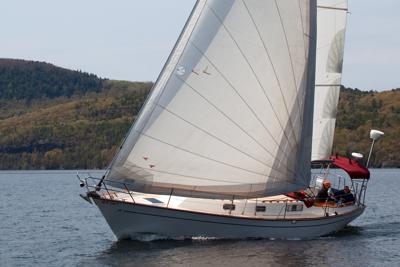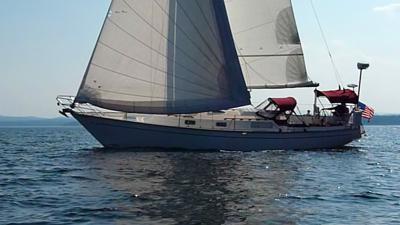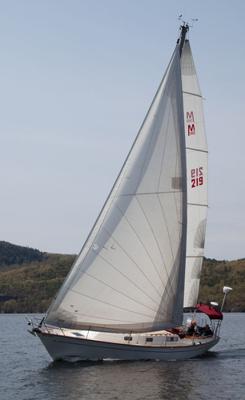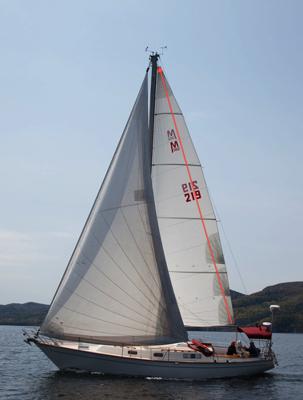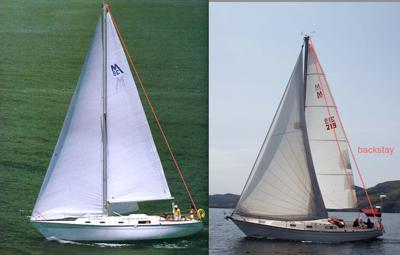John,
I think that Timothy's experience with a working jib is because he has a 384 with a taller mast than the 382. In my experience the 382 likes more headsail area then a working jib provides. Depending on the average wind in the area that you sail my advice is consider a genoa of 135 to 150% that can be reefed under stronger winds.
When I had Southerly's genoa made I asked the sailmaker to raise the clew 2 feet more then normal. I left the tack the same. This gave me a better view under the genoa while heeled over. And the sail does not scoop water. As I reef the headsail the forward area rises as does the clew. I'm sure some of the guys have had the tack set higher on a new sail as well. But this cut suits me and I would build my next genoa the same way.
Ask around in your local area what the more experienced sailors with similar vintage and style boats advise. Southerly sails Western Long Island Sound to Maine.
I hope that helps you.
Larry
I think that Timothy's experience with a working jib is because he has a 384 with a taller mast than the 382. In my experience the 382 likes more headsail area then a working jib provides. Depending on the average wind in the area that you sail my advice is consider a genoa of 135 to 150% that can be reefed under stronger winds.
When I had Southerly's genoa made I asked the sailmaker to raise the clew 2 feet more then normal. I left the tack the same. This gave me a better view under the genoa while heeled over. And the sail does not scoop water. As I reef the headsail the forward area rises as does the clew. I'm sure some of the guys have had the tack set higher on a new sail as well. But this cut suits me and I would build my next genoa the same way.
Ask around in your local area what the more experienced sailors with similar vintage and style boats advise. Southerly sails Western Long Island Sound to Maine.
I hope that helps you.
Larry


